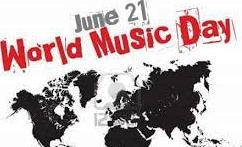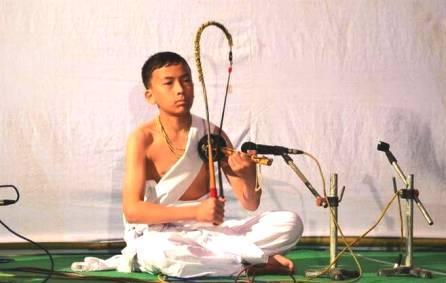
On this world music day, let’s take a look at musical instruments that are slowly becoming silent, drowned our by the cacophony of the electronic sound.
In an age dominated by electronic sounds and techno-based music, the charm of musical instruments is fast losing ground as they slip into oblivion.
Pena: chordophone!
Also known as Bana, Bena or Tingtelia, it is an instrument that is restricted to the Meitei community of Manipur in India. Pena playing is becoming a dying art as only 145 active Pena players are reported in Manipur.

However, the Center for Research on Traditional and Indigenous Art (Laihui), an organization headed by renowned Pena player, Khangembam Mangi Singh has mandated vision to revive Pena music.
The instrument is also known as Bana or Bena or, as the Nagas call it, Tingtelia. It is also played in some parts of Bangladesh and is a part of folk theatre.
Pena belongs to the category of chorodophones and is a bowed mono-string instrument. The main body is called ‘Penamasa’ in Manipur and is made out of bamboo and the bow is called ‘Pena Cheijing.’ It is attached to a coconut shell, which is the resonator, and is cut in half. Four holes are drilled on the shell for acoustic purposes, where one is covered by dried animal skin and the other is left open.
There is a fingerboard made of wood. To control the tension of the string, there is a bamboo peg fixed inside a hole. The hole is pierced on the bamboo rod. A scroll is also attached to the tail of the instrument. The bow is made of wood. It is curved at one end, which is made of metal. Tiny metal bells are attached to this curve at the back of the bow that jingles while playing, thus providing the rhythm. The bow hair is traditionally made from the horse’s tail but sometimes metal strings or those made out of wood fibre are also used.
The performer can play the instrument sitting, standing or while dancing. The coconut shell part is placed near the neck or the chest of the performer, who holds it like a violin. The Pena, which used to be played for royalty once, is now connected with the Lai Haraoba festivals, which comprise rituals, apart from song and dance.
Some lament that something as commonplace as the tabla or even the piano is more often than not, being replaced by computerised sounds and beats, leaving little scope for traditional artists to showcase their talents, many of whom are leaving for greener pastures, with the instrument and its ‘gharana’ itself dying out. The elemental sounds of music, it seems, is well on its path to oblivion.

